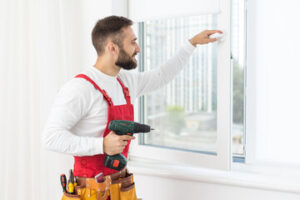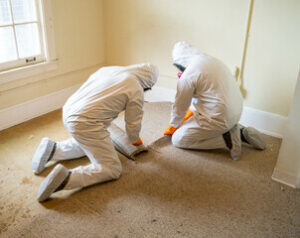Construction offers a variety of rewarding and challenging career opportunities. This field is well-suited for people who enjoy working with their hands and want to be involved in something that embodies self-expression. Contact Diversified Management & Construction, Inc. now!
We would not have the hospitals, banks, restaurants, and office buildings that we use every day without the skilled craftsmen who work in this industry. It’s an exciting time to be in this industry

Construction has many moving parts. An experienced team is needed to manage the project successfully and ensure that milestones are met. It is also critical that all team members work well together. It is important to look for contractors with experience working on similar projects and a strong reputation. The selection process should include reference checks, past projects, and a thorough interview. Choosing the right contractor can save you a lot of frustration, cost overruns, and project delays.
One way to choose the right contractor is by focusing on their core values. For example, it is a good idea to find contractors who share your passion for safety and who place high value on integrity. A successful partnership between you and your contractor should start during the design phase with a collaborative process that includes clear communication, transparent expectations, and joint accountability.
It is also important to select a contractor that has a solid track record of completing projects on time and within budget. To avoid surprises, it is a good idea to create a firm budget during the design phase and base it on independent costs estimates from qualified contractors. This will reduce the likelihood of expensive change orders during construction and help to keep your project on budget.
In addition, you should always make sure that a contractor has the proper insurance coverage. It is vital to have liability and property damage insurance as well as worker’s compensation. You should ask to see certificates of insurance during the contractor selection process.
Aside from ensuring that the contractor has adequate insurance coverage, you should also consider their commitment to safety. It is a good idea to have a site tour and ask about safety programs and procedures. You should also ask about previous incidents, accident rates, and OSHA compliance. Choosing a safe and responsible construction contractor will help to prevent costly delays, schedule changes, and cost overruns.
Collaboration in construction is a great way to increase productivity, improve quality, and reduce the risk of failure. Unlike traditional methods of project delivery, which typically define how to work on individual segments of the job but do not showcase the bigger picture, collaborative processes provide a holistic view and emphasize joint goals over competitive, adversarial solutions.
Planning Ahead
One of the biggest reasons that construction projects go over budget is poor planning. This is because construction projects are very complex, and there are a lot of moving parts that must come together at the right time to ensure success. This is why it’s so important to plan ahead as much as possible.
Effective planning starts with a clear timeline that includes milestones, deadlines, and deliverables. This helps everyone on the team stay on track and meet their commitments. Moreover, it helps prevent financial strain by setting aside contingency funds to cover unforeseen expenses.
The next step in effective construction planning is determining what resources are required for the project, including materials, labor, and equipment. Using this information, it’s then possible to create a detailed budget that accurately reflects the project’s cost. This is important because overspending on a construction project can put the entire project at risk.
Once the budget is set, it’s then time to procure materials and equipment. This involves selecting vendors and comparing estimates to identify the best value. Moreover, it’s important to factor in any delivery delays or price fluctuations when estimating costs. Finally, it’s also important to take into account any potential risks or complexities that could arise during the construction process.
Another crucial aspect of construction planning is creating a look-ahead schedule. This helps the project manager and team members determine the sequence of tasks that must be completed to meet the completion date. This is especially helpful when dealing with long delivery lead times for equipment or materials.
It’s also important to consider how the schedule will be affected if any key personnel are unavailable. Moreover, it’s important to estimate the amount of labor required for each task and include a contingency rate to account for possible unforeseen labor needs.
In addition, a good plan will also incorporate critical path scheduling procedures and job shop scheduling processes to maintain seamless workflows and maximize resource efficiency. Finally, a quality construction plan will allow the team to identify any issues with the timeline and resolve them quickly.
Prioritizing Safety and Quality
Construction involves a lot of physical labor, with workers often performing strenuous tasks for long periods of time. This can lead to fatigue and stress, which can contribute to safety concerns. Workers should be provided with adequate rest breaks, hydration, and other forms of support to maintain productivity and prevent fatigue-related accidents.
Similarly, quality assurance teams should be aware of any potential risks that can impact a project’s timeline and budget. These teams should regularly evaluate whether processes are working well and take steps to address any issues. This can be done through an iterative process of reviewing and revising protocols, as well as by evaluating data from a variety of sources such as inspection reports, worker surveys, and operational metrics.
The safety of a workplace should never be viewed as just a regulatory requirement or moral obligation; it is a strategic investment. By ensuring that workers are safe, companies can foster a productive and positive work environment that results in satisfied clients, strong employee retention, and overall business success.
A company’s safety policies should also be adapted to the realities of the industry. For example, the use of new technologies like drones and augmented reality in construction can introduce a whole set of safety considerations. Training in these areas should be incorporated to ensure that employees have the skills and knowledge they need to operate these tools safely.
In addition, the aging workforce means that many experienced employees are leaving the field for retirement or other reasons, which leaves less experience in general on the jobsite. This can lead to a sense of complacency among workers, and it is important that a culture of safety be fostered to prevent this. Training can help to keep safety top of mind for all workers, and open communication with workers is key to addressing any concerns that may arise.
Construction is a dynamic industry that relies on a combination of manual labor and cutting-edge technology to create structures that stand the test of time. By implementing robust safety measures, companies can protect their most valuable asset—their people—and ultimately build stronger and more reliable buildings.
Keeping a Project on Schedule
It takes a lot of time and resources to complete construction projects, so it’s important that the project stays on schedule as much as possible. The best way to do this is by having a well-developed project plan that clearly defines the milestones and dates for each task. This will make it easy for everyone to monitor progress and stay on track.
Having a clear project schedule also helps prevent delays and keeps costs in check. It’s important to consider any factors that could impact the timeline, such as weather, holidays or vacations, and be sure that those are reflected in the plan. It’s also helpful to identify and prioritize the tasks that are essential to keeping the project on schedule, known as the critical path, and ensure that those are given sufficient time and attention.
By having a clear picture of all the work that needs to be done, how and when it’s going to be completed and who is responsible for each task, a project manager can keep a close eye on things and avoid any surprises down the line. This will allow them to spot issues or potential problems early, so they can take action quickly and stave off any bigger problems down the road.







